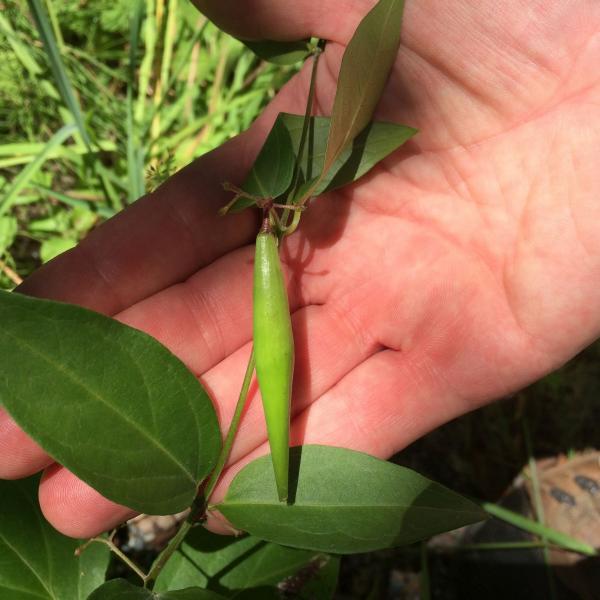
News Source
"Most readers are familiar with monarch butterflies (Danaus plexippus). The striking orange and black species has historically been widespread throughout North America.
Its life history makes it an attractive tool for lessons about insect ecology. Monarch caterpillars forage exclusively on milkweed (Asclepias). Foul-tasting chemicals they acquire from the plants render monarch caterpillars and butterflies unpalatable to predators. In late summer, monarchs living in the Eastern U.S. make their annual migration to overwintering grounds in Mexico.
In recent years, monarch butterfly populations have crashed. Habitat loss, herbicides and invasive species have all played a part in diminishing this once common species. East of the Rockies, monarchs have declined by more than 90 percent since 1995. Loss of overwintering habitat in Mexico due to logging and farming is part of the problem. More of a threat, however, is the widespread decline of milkweed in the Midwestern U.S. due to herbicide use on corn and soybean crops. In the Northeast, milkweed is also under pressure due to development and the regrowth of abandoned fields into forests.
Two troublesome invasive plants are adding to the monarch’s woes. Black swallow-wort (Cynanchum louisea) and pale swallow-wort (C. rossicum) are perennial vines introduced into the U.S. from Europe and Eastern Russia during the mid to late 1800s. These invasive plants are now found scattered across the northeastern U.S. and southeastern Canada. Here in the Hudson Valley, black swallow-wort is found along roadsides and in utility right-of-ways. On the Cary Institute’s campus, swallow-worts likely hitchhiked in on highway department mowers and utility service equipment. Plants are slowly spreading by way of seeds and underground rhizomes.
Left unmanaged, swallow-wort can take over open habitat, choking out native plants (another common name for the plant is “dog-strangler vine” likely because of the difficulty dogs have moving through its dense and twisted mats). Because swallow-worts are in the milkweed family, they are especially problematic for monarchs. Plants give off cues that trick a small but significant percentage of monarch butterflies into laying their eggs on them. When the eggs hatch, larvae die within a few days.
Swallow-wort control takes commitment. Manually digging up plants can be effective, but is labor intensive. Cut plants should be burned or bagged and landfilled — not composted, as plant parts and seeds can form new plants. Mechanical mowing can cause swallow-wort to produce more stems, but may temporarily reduce spreading if it takes place before seeds mature. Cutting can also lead to new infestations if machinery is not thoroughly cleaned after use. Herbicides are the most effective control for large patches. Biological control methods are being researched, but are not yet available.
Help monarchs by conserving milkweed patches, planting new milkweed plants and removing swallow-wort whenever possible. To learn more about invasive species in the Hudson Valley, including upcoming events, visit the Lower Hudson Partnership for Regional Invasive Species Management at http://lhprism.org/. Help track the spread of invasives in your area by contributing observations at http://imapinvasives.org/. Learn more about monarch conservation by visiting www.monarchjointventure.org
Mike Fargione is a wildlife biologist and manager of Field Research and Outdoor Programs at the Cary Institute in Millbrook. Contact him at 845-677-7600, ext 124 or fargionem@caryinstitute.org"
Article Credit: M. Fargione, Poughkeepsie Journal
Photo Credit: E. Spinney "Black swallowwort in southern Vermont"